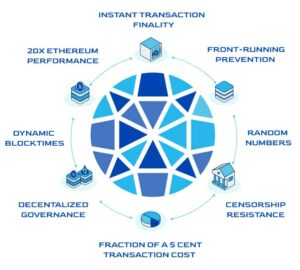Frontrunning attacks are unethical practices where a blockchain participant capitalizes on advanced knowledge of pending orders to derive an unfair benefit over other network participants. A typical example is a network participant placing a higher buy/sell order after identifying the pattern of a target order – just to gain profit over others on the network. These are more common in decentralized ecosystems like Ethereum – where transactions are completed based on their mempool’s arrival time.

On Ethereum (and similar chains), blockfinder includes transactions in a block to order by nonce and transaction fee (although, exact implementations vary). However, they have to choose some order: all transactions are always executed one after the other, with no parallelism! On DMD Diamond blockchain v4, transactions from the same sender are processed in order of nonce, but all senders in a block are ordered by utilizing DMD Diamond’s unique random function which makes sure no one not even the block finder (which in the case of DMD are cooperative 25 nodes) can predict or manipulate or change that order.
These equipped the DMD diamond ecosystem to implement a front-running prevention mechanism – by randomising the order in which transactions are processed based on the ecosystem’s random numbers engine, making it unpredictable for front-running exploits. All thanks to the unique HBBFT consensus algorithm – an enabler for this feature. While the DMD diamond blockchain supports EVM-based smart contracts, it offers the best of Ethereum and other similar chains by preventing front-running attacks in its network – an advantage to all contracts running on top of the DMD diamond blockchain.
Interesting right? Learn more – https://bit.diamonds/blog/